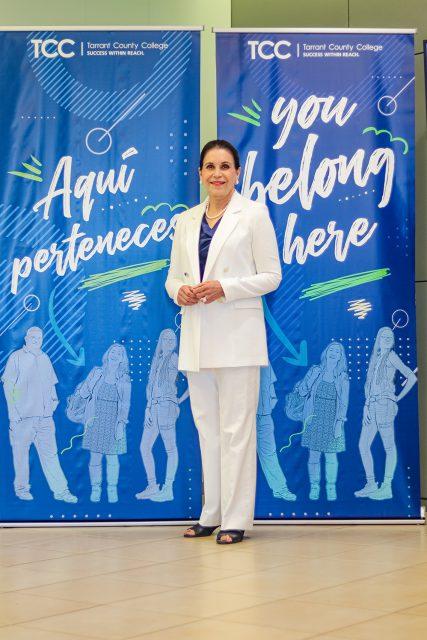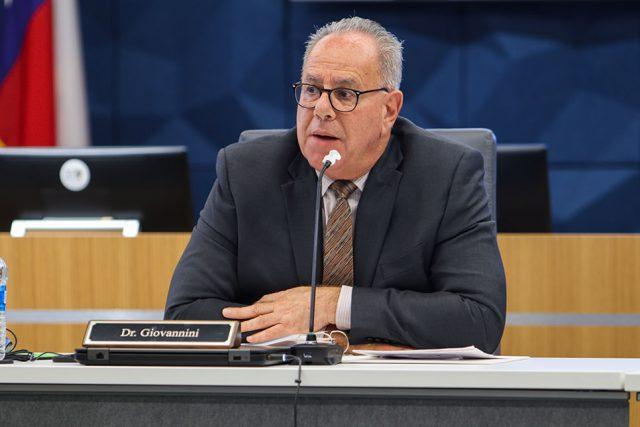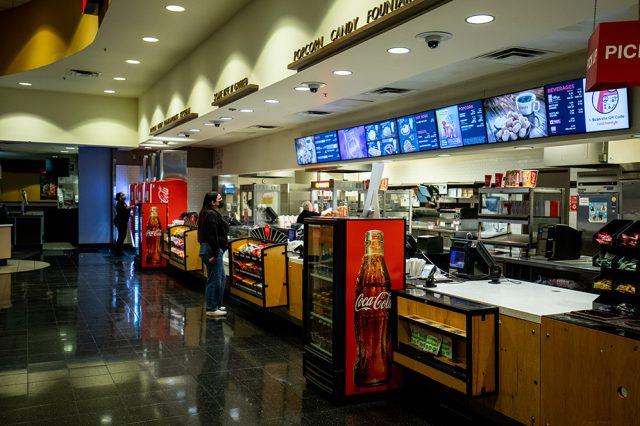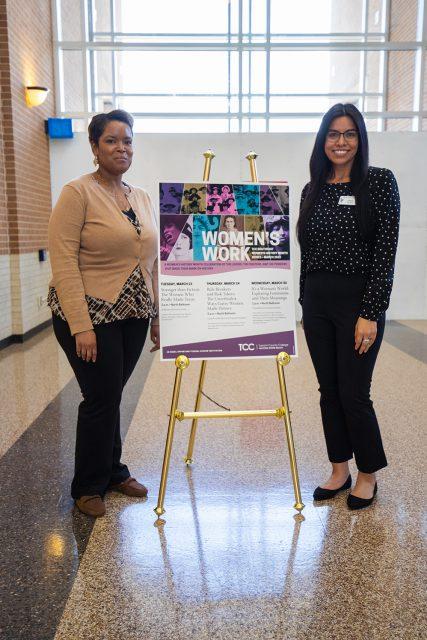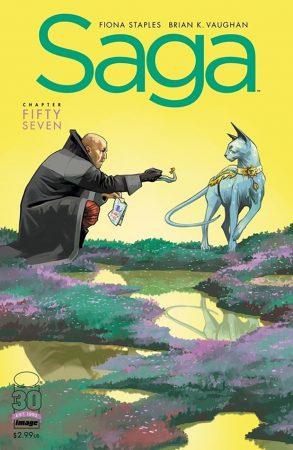
Photo courtesy of Image Comics
JOSÉ ROMERO
editor-in-chief
collegian.editor@tccd.edu
After an over three-year hiatus, Saga has returned triumphantly, continuing its intergalactic story that’s grounded by a memorable cast of characters.
When readers think of groundbreaking comics, stuff like Alan Moore’s Watchmen comes to mind, but that thought process needs some alterations. What Brian K. Vaughan and Fiona Staples have accomplished with the Saga universe deserves recognition
The story manages to stay coherent, no matter how bizarre it gets. It’s a perfect balance of social commentary, humor and serious character moments, all displayed within beautifully illustrated panels by Staples. The art and story pair together like pinot noir and Gruyere, simply delectable.
Saga is about Marko and Alana, who committed an unforgivable crime — they fell in love. They’re from different planets, planets that hate each other’s guts.
The characters found themselves on thin ice for attempting to run away together. To make matters worse, they conceived a child, Hazel. In doing so, they became war criminals, with elites and bounty hunters pursuing them. If word got out about this “abomination,” its impact could be devastating, at least that’s the propaganda behind it. However, no matter what was thrown at Marko, Hazel and Alana, they persevered, mostly.
The series went on a long break in 2018 after a cliffhanger in issue 54. It wasn’t until January of this year that it finally came back, wetting the palates of readers dying to know if what happened was real or not, no matter how heartbreaking the answer was.
Right off the bat, issue 55 pulls no punches. Hazel, the narrator of the story, confirms what happened in issue 54. A truly gut-wrenching moment in a series filled with them, and this is just the halfway point, according to Vaughan.
Saga always does a great job at reminding the reader that nobody is safe, which is scary as hell. An innocent character can go from having a good time in one issue to begging that God is real as he suffers a slow, painful death by an enormous space baby in the next.
Each death is impactful because even the most despicable of characters have some sort of sympathetic trait to them, making it hard to cheer when they meet an untimely demise. The best and worst part about these deaths is that it rarely leaves anything to the imagination. It’s all vividly illustrated, forcing you to look at the end of a character’s journey.
It makes death a much more traumatic, personal experience. Other comics have people dying left and right, ignoring the ramifications of it. Saga lets the reader see the carnage, making them question if that’s the outcome they wanted, no matter how much they hated a character.
Reflection is Saga’s most important theme. It wants the reader to sit back and consider every word in a speech bubble. It wants them to connect its fictional events to real ones. But, mostly, it wants the reader to understand how ugly the world can be. In doing so, the comic highlights how happier moments should be cherished, even if they’re few and far between.
Saga is a master class in world-building, character dynamics and art. It’ll be a couple of years before it concludes, but it will forever be ingrained in my mind.

























